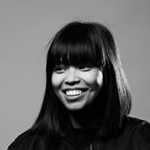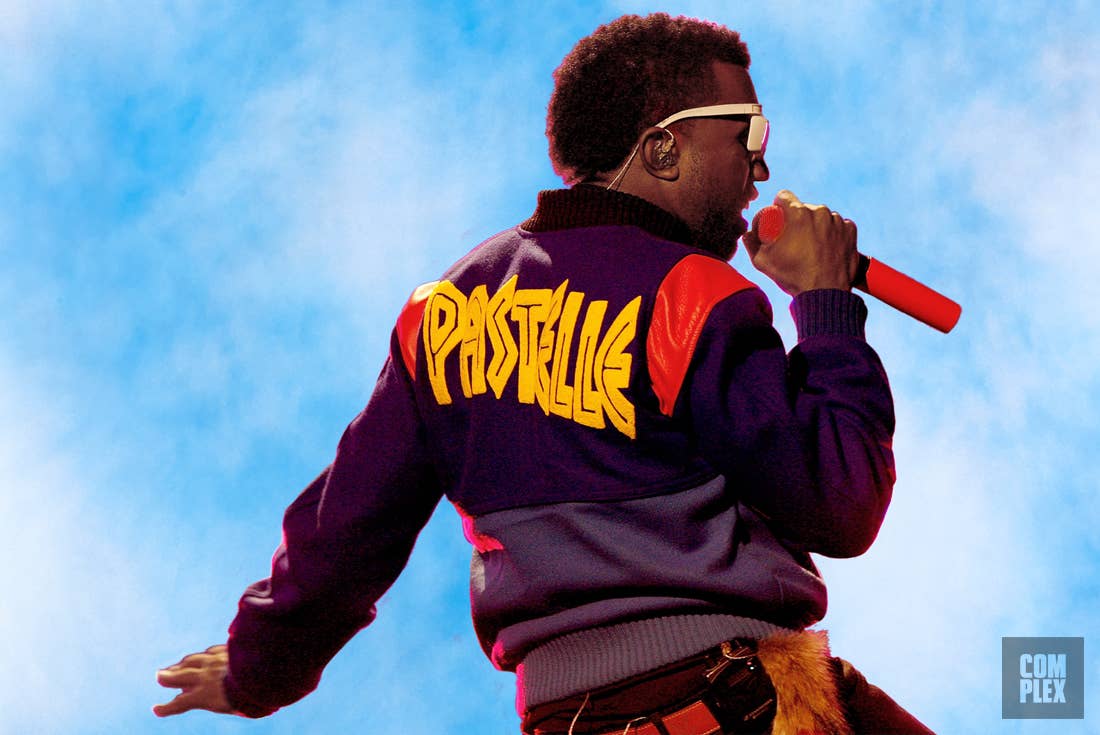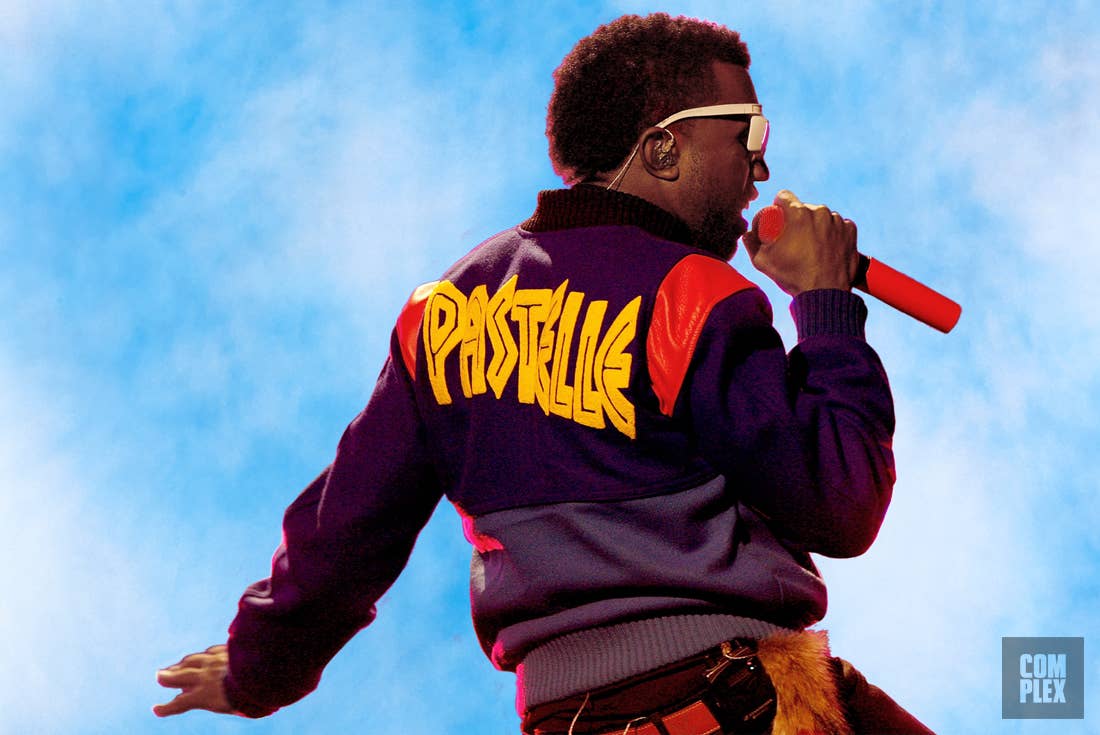
In the summer of 2007, Daniel Beckerman received an email from William Morris, the prolific talent agency that repped Mel Gibson, Denzel Washington, and Catherine Zeta-Jones. Kanye West, William Morris said, was interested in collaborating with Retrosuperfuture, the Italian sunglass brand Daniel co-founded with his brother Simon. But Daniel had no idea who either William Morris or West were. The music editor at Italian magazine PIG, where Daniel is also CEO, had to fill him in. “[He told me] he was a rapper, he was becoming big, and that he was the one who remixed the Daft Punk song,” Daniel says. The just-released “Stronger,” with a video that introduced the soon-to-be ubiquitous shutter shades by Alain Mikli, would catapult West into pop stardom.
Daniel was flattered by the request, but surprised that West wanted to work with him. After all, he had just launched Retrosuperfuture a few months before. “I didn’t expect this fast success,” he says. “I’m an ambitious guy and I work to make the best sunglasses, but honestly, I didn’t expect that much in a short time.” But a chance to work with West was too big an opportunity to pass up, he told himself. Plus, he’d seen how West had propelled the shutter shades into the mainstream. Imagine what a co-sign from the rapper could do for his young brand. “I said, ‘Wow. This can be important for me and my brand,’” says Daniel.
Roughly a month later, and after several email exchanges with West’s agent and a meeting at the William Morris office in New York, West invited Daniel to his Manhattan apartment. “Everything happened so fast,” says Daniel. For about an hour, they thrashed out ideas, discussing various samples of Retrosuperfuture sunglasses—including the Classic, Retrosuperfuture’s first design, and the Gino, a then-unreleased frame that features a golden triangle on the bridge of the shades. “The conversation was out of this world,” says Daniel.

West had been a fan of Retrosuperfuture’s. Just days before their meeting, he wore a white pair of the Classic frames to the MTV Video Music Awards. But now, he was welcoming Daniel into his coterie of collaborators. “Having somebody like him appreciate my brand and the product I was making was amazing,” says Daniel.
At West’s request, Daniel and Retrosuperfuture produced 20 different samples of the Flat Top, a pair of sunglasses that features oversized lenses and a straight top line on the brow. West, Daniel says, “fell in love” with the Flat Top’s shape. Among them were shades molded out of wood (West wanted it to be "organic," Daniel explains) and a few prints, including one with zebra-striped frames and blinding gold lenses. For the next batch, West wanted to design a pair made with unique materials like briar and marble—the latter inspired by the renovations in his Los Angeles home. To Daniel, it all felt like the start of a promising new business relationship.
Daniel didn’t know it at the time, but he was one of some 30 designers and consultants handpicked by West to help him create his first fashion imprint: Pastelle.
“It was X-Men coming together. [Kanye] had some colorful individuals and creative people working to his benefit.” - Taz arnold
Over the course of three years, West and his team—Virgil Abloh, Don C, Matt George, who served as president and CEO of all of West’s non-music projects including Pastelle, and multi-disciplinary designer and director Willo Perron—scoured the globe for potential collaborators from every category of fashion. West had industry all-stars like Kim Jones, then Louis Vuitton’s men’s artistic director, serving as consultants. He also recruited lesser-known designers like Emma Hedlund of CMMN SWDN, who designed the women’s line, as well as Saif Bakir also of CMMN SWDN and Alexander Valdman, founder of HomeRoom Clothing, for apparel. Reigning Champ was approached in the early stages, though Doug Barber, the Canadian brand’s marketing director, says “that’s where the conversation ended.” Ben Baller, who was enlisted by George in 2009, made colored plastic Jesus pieces with brass on the back. At one point, A Bathing Ape almost handled distribution of the clothing and LRG founder Jonas Bevacqua was in talks about “trying to pick it up and do stuff,” according to Ben. KAWS was commissioned to illustrate logos.
Others, like vintage street archivist Edgar Sosa and Touch Su, both of whom worked with Fruition co-founder Chris Julian, did research and sourced vintage items that were used as references for various Pastelle designs. From 2006 to 2008, they scoured for rare vintage goods at thrift shops and the Rose Bowl Flea Market in L.A. and presented them to West and Julian. Whatever pieces West liked they'd take back to Las Vegas, where Fruition is based, and collaborate with Julian and Mike Pouncy, then lead designer at Fruition, who designed some of the apparel.
Once, Su and Sosa met West at Record Plant, a recording studio in L.A., and brought him a vintage Detroit Pistons shirt emblazoned with the team’s logo and a graphic of a basketball in a hoop, as well as an old sweater with piano keys and roses on it. The Pistons tee later inspired a Pastelle shirt that features the words “Premium Pastelle” and a basketball in a hoop, while the sweater resulted in a Pastelle T-shirt with similar graphics of a piano keyboard and rose. “Those were the first Pastelle T-shirts,” says Sosa. “They were on Alstyle Apparel blanks. The quality of the shirts was not the best, but it was like, ‘Let’s get it out there. We gotta meet [Kanye] next week.’” They also sourced a leather troupe jacket that, in a way, inspired the famous cobalt blue Pastelle varsity jacket with “PASTELLE” in yellow on the back. “We used to have this leather troupe jacket that [Kanye] used to bug out on like, ‘Yo. We should make jackets like this.’ And that’s how the varsity jacket came about,” remembers Su.

“There was a big thing of leather and varsity jackets going around,” adds Sosa. “Chris always wanted to put that out. I was like, ‘Yeah, a varsity would be amazing. It’s like this symbol of sportsmanship and winning.’ So we did that, and I remember the letters. I was like, ‘Let’s do some Do The Right Thing with Jungle Feverfont.’”
“It was X-Men coming together,” says Ti$A designer Taz Arnold, who was brought on in July 2008 as a creative consultant and to help design two full Pastelle collections. “[Kanye] had some colorful individuals and creative people working to his benefit.”
Like Daniel, some of these designers met with West in person; others only communicated with the rapper via email and phone. A few were never in direct contact with West, just his team. The approach may have varied, but according to the people interviewed for this story, the process was similar: an initial proposition from West or his people, an enthusiastic sharing of ambitious plans, the creation of designs and samples, and then… nothing.
Pastelle was supposed to be West’s grand entrance into the fashion world. Had he released the brand, it would’ve been a momentous moment—the hottest rapper alive, fully maximizing his grip on the zeitgeist. Pastelle could’ve sparked his fashion career. So, why didn’t it ever come out?
“It was a cross between that real golden era of Polo, a simpler A Bathing Ape, and a little bit of A.P.C.” - Ben baller
From his very first introduction as an artist, West was vocal about his interest in fashion. “This morning, I spent a lot of time trying to pick my outfit because I’m really into clothes,” he said on Def Poetry Jam in 2003, one of his earliest public appearances. “I’m going to be the best-dressed rapper out in the game.”
When West released his debut album, 2004’s The College Dropout, rappers with clothing lines were nothing new. But West’s vision went beyond just cashing in on his celebrity name. That same year, it was reported that he was releasing his first brand, Mascotte by K West, which was rumored to be funded by Roc-A-Wear and was slated to hit stores before the end of the year.
By September 2005—a few weeks after the release of his second album, Late Registration—West confirmed that a foray into fashion was imminent. “Now that I have a Grammy under my belt and Late Registration is finished, I am ready to launch my clothing line next spring,” he told Stuff, a British men’s gadget and lifestyle magazine. The following year, he assembled a team and started working on Pastelle. In 2007, a studio in L.A. was set up. Then, he followed up with references to Pastelle in songs like “Stronger” and T.I.’s “Swagga Like Us.” “So go ahead, go nuts, go apeshit/ ’Specially in my Pastelle, on my Bape shit,” he rapped on “Stronger.”
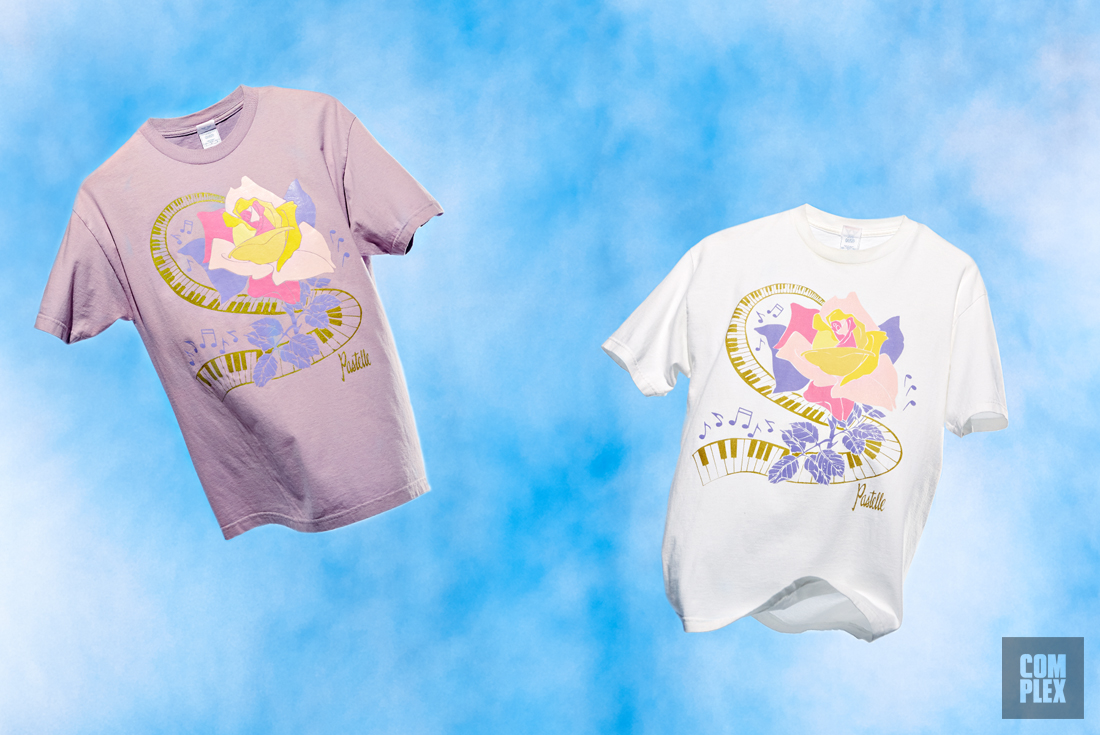
The hype continued to build when West sat front row at the Dior fashion show in Paris in July 2008 wearing a grey full zip hoodie with red/yellow/pink rainbow-like stripes on the hood and grey circular shapes around the shoulders and elbows. The sweater mirrored A Bathing Ape’s iconic Shark Hoodie and was rumored to be a piece from the rapper’s forthcoming line. By November, the anticipation for Pastelle had reached fever pitch; West famously attended the 2008 American Music Awards in a cobalt blue varsity jacket with “PASTELLE” in yellow across the back.
That same month, West expressed his fashion dreams on his now-shuttered blog, kanyeuniversecity.com: “I swear to you guys all I do is work on design when I get off the stage. I want to and will be the real thing. I will not just be a ‘celebrity designer.’ Shit has to be good!!!” In February 2009, during the two-year hiatus between 808s & Heartbreak and My Beautiful Dark Twisted Fantasy, West cleared his schedule for five months to work only on clothing design. (At the time, he was also designing his Louis Vuitton sneakers and Nike Air Yeezy 1—the first time Nike gave a signature sneaker to a non-athlete—both released later that summer.) “This is what I wanna do right now with my life,” he told Flare, a Canadian women’s fashion magazine.
By that point, public demand was peaking for Pastelle (or Past Tell Museum—the final name was never fully confirmed), coupled with intense curiosity from the media. West had already assembled an all-star team of collaborators, who by his standards were the best at what they did. All there was left to do was unveil the product. “I’m not saying that I think I’m the best designer in the world, but what I’m saying is that I think I can become that,” he told Complex in an interview printed in the April/May 2009 issue.
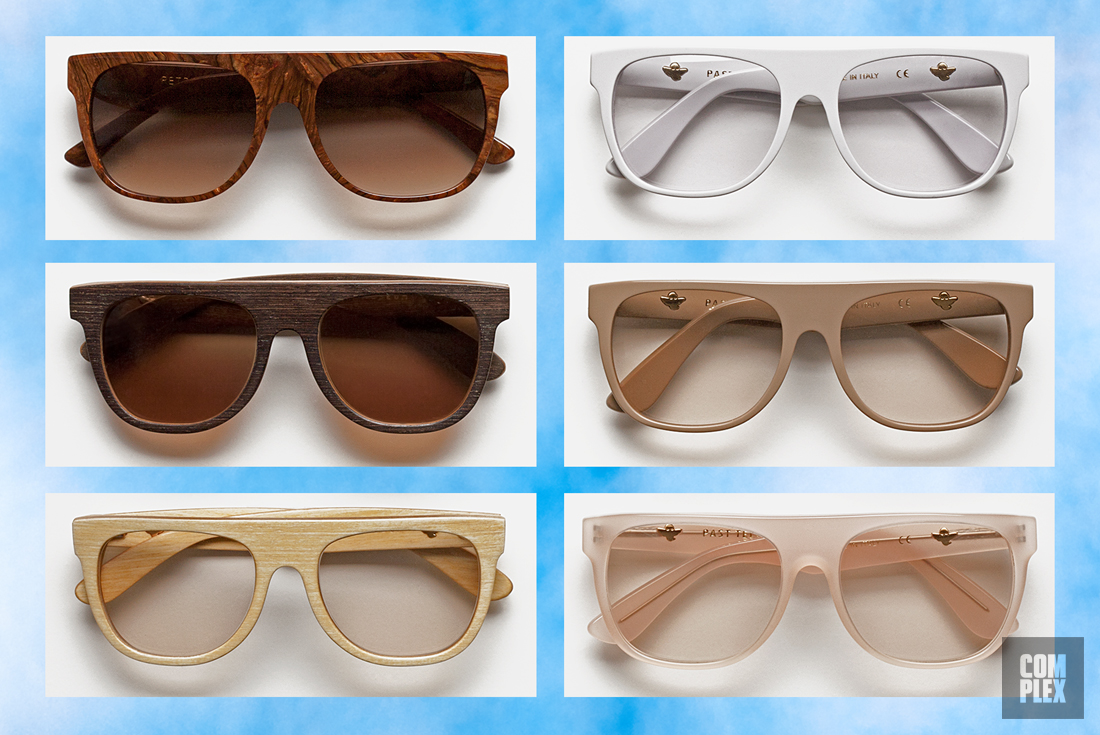
Toward the end of August 2008, Giorgio di Salvo and Paolo Budua, founders of Italian brand VNGRD, received a call in their Milan showroom from West’s personal assistant. West, the rapper’s assistant said, wanted to speak to them. Unlike Daniel, the designers, then in their early 20s, knew exactly who West was. “It was amazing,” di Salvo says about the co-sign from West. “It was like, ‘Wow. Now we are the kings of street fashion.’”
West was a fan of VNGRD and had praised its Fall/Winter 2008 collection on his blog, which di Salvo and Budua checked regularly. Now he wanted them to work on Pastelle. “He told us, ‘I’m doing a collection. Its name is Pastelle. I want to open some Pastelle shops in the world. I want to do something that’s not expensive,’” recalls di Salvo. “After that, he sent us the PDF with the line sheet of the collection and asked us to give feedback about the pieces. He asked what, in our opinion, Pastelle needed, if there was something to add.” In the next three months, VNGRD designed a total of roughly 20 streetwear-inspired technical jackets, sweatshirts, sweatpants, and hoodies for West, most of which were emblazoned with the same pastel-colored rainbow that was becoming a prominent feature in the existing Pastelle collection. They also worked on the Pastelle logo, submitting 31 different graphics—some in black, others in pastel colors, and a few incorporating triangles or gradient effects.
Those logos joined the many others that West commissioned for Pastelle, including artwork from Bryan Espiritu and Allister Lee, both graphic artists from Toronto brought on by Jesar Gabino, co-owner of the now defunct boutique Nomad. “I was working for an ad firm at the time and I was at the office when I got the email [from Jesar],” says Espiritu, who was given four days to create branding for Pastelle. “I remember being like, ‘If I get this, this is it.’ They were looking for five or six concepts from me. The only designer that they actually told me was working on it, other than myself, was KAWS. They had sent me the work he had done—it was a bird with sunglasses—to reference it and they were like, ‘This is what KAWS did. You don’t gotta do the same shit but this is kind of what we’re going for.’ Which at the time, considering I’d only been designing for a few years, felt like the fucking world was on my shoulders. It was like, ‘Here’s what KAWS did. You just gotta do something that Kanye is going to think is better than this.’” Espiritu's cartoon-like sketch of a bird later made it onto mockups of shirts.
Arnold says Pastelle was “more like a conversation” than a “supreme vision,” which is why he thinks West had so many contributors.
“I think he wanted [Pastelle] to be the sum of the best things he found, personalized by him,” adds Retrosuperfuture’s Simon. “So, he chose the best people, or who he thought were the best, to collaborate with.”
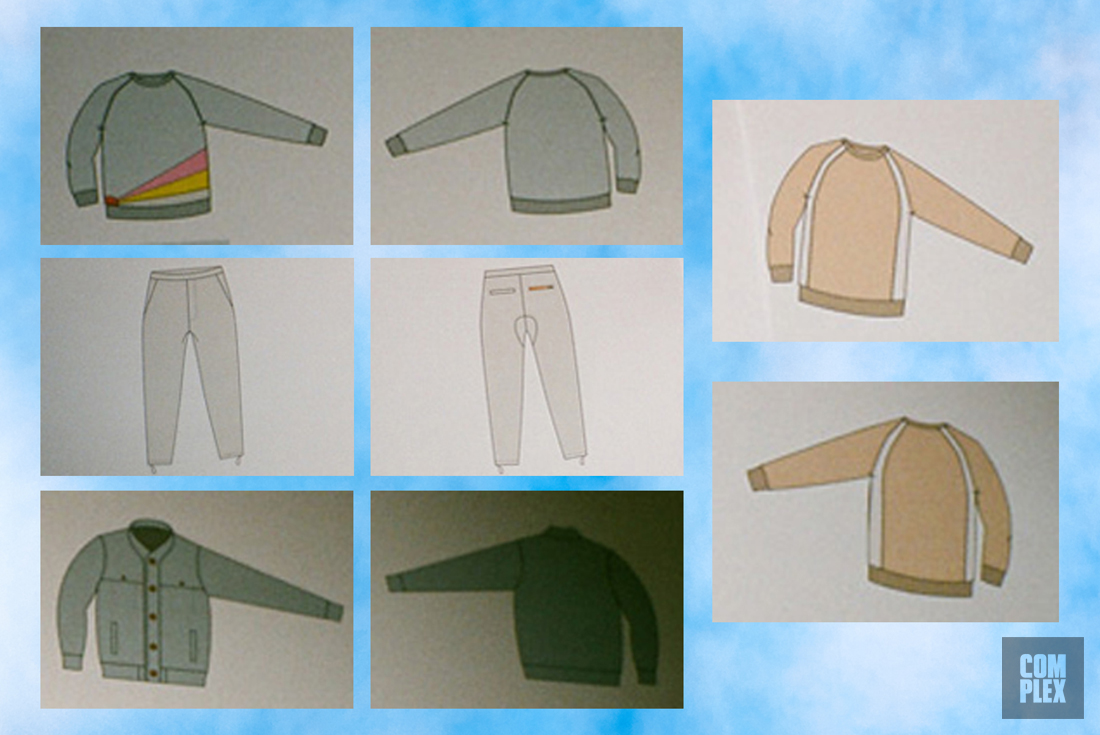
Constant collaboration was in line with West’s artistic philosophy. “I think it’s a very non-arrogant thing,” he told Details in 2009. “I absorb information, and I want people to know where the information is coming from so those people can be in a position for people to listen to them and capitalize off of the genius that they bring to the table—because I only surround myself with geniuses.” In the case of Pastelle, West built a diverse working community—albeit a massive, disconnected one. Few really knew who the rapper hired, or how many, and designers rarely met each other. “There may have been people he hired who I don’t know,” Arnold admits. Daniel agrees, saying he and the rest of Retrosuperfuture “were part of a team where we didn’t really know people.”
Though many collaborators worked remotely, West and his team set up studios in New York, Paris, and Fairfax Avenue in L.A. There, they developed everything from stage designs to Pastelle collections. The Fairfax office, one designer remembers, was decorated with white walls, steel desks, exposed lumber, and mood boards littered with sketches and West’s other inspirations. Among them were Carrera sunglasses, vintage issues of Vogue, a multitude of font typefaces, and the stage production of a musical the rapper watched with Arnold and his late mother Donda West in London in 2007. On occasion, West brought in items from his personal closet and pinpointed patchwork he liked or the construction of a particular piece. The clothes he championed were from designers like Phillip Lim, Kris Van Assche, and Alexander McQueen. Once, it was a $2,000 green puffer jacket that still had the price tag attached. “It was about the curiosity of ‘How did he do this?’” explains a Pastelle designer, who worked on apparel with West.
West was very hands-on with every aspect of the operation. “The guy wanted to know every little detail, and he came in super-early and left super-late, like this was his priority,” explains one designer, who asked to remain anonymous. West co-designed pieces with Abloh in the studio and, with the help of in-house sewers and pattern makers, brought other designers’ sketches to life. He even flew to Asia to source fabrics and look at factories. West’s inner circle included creatives—such as close friends Don C and Ibn Jasper, and Chris Julian—but, a former business associate says, Pastelle was “definitely all Kanye.”
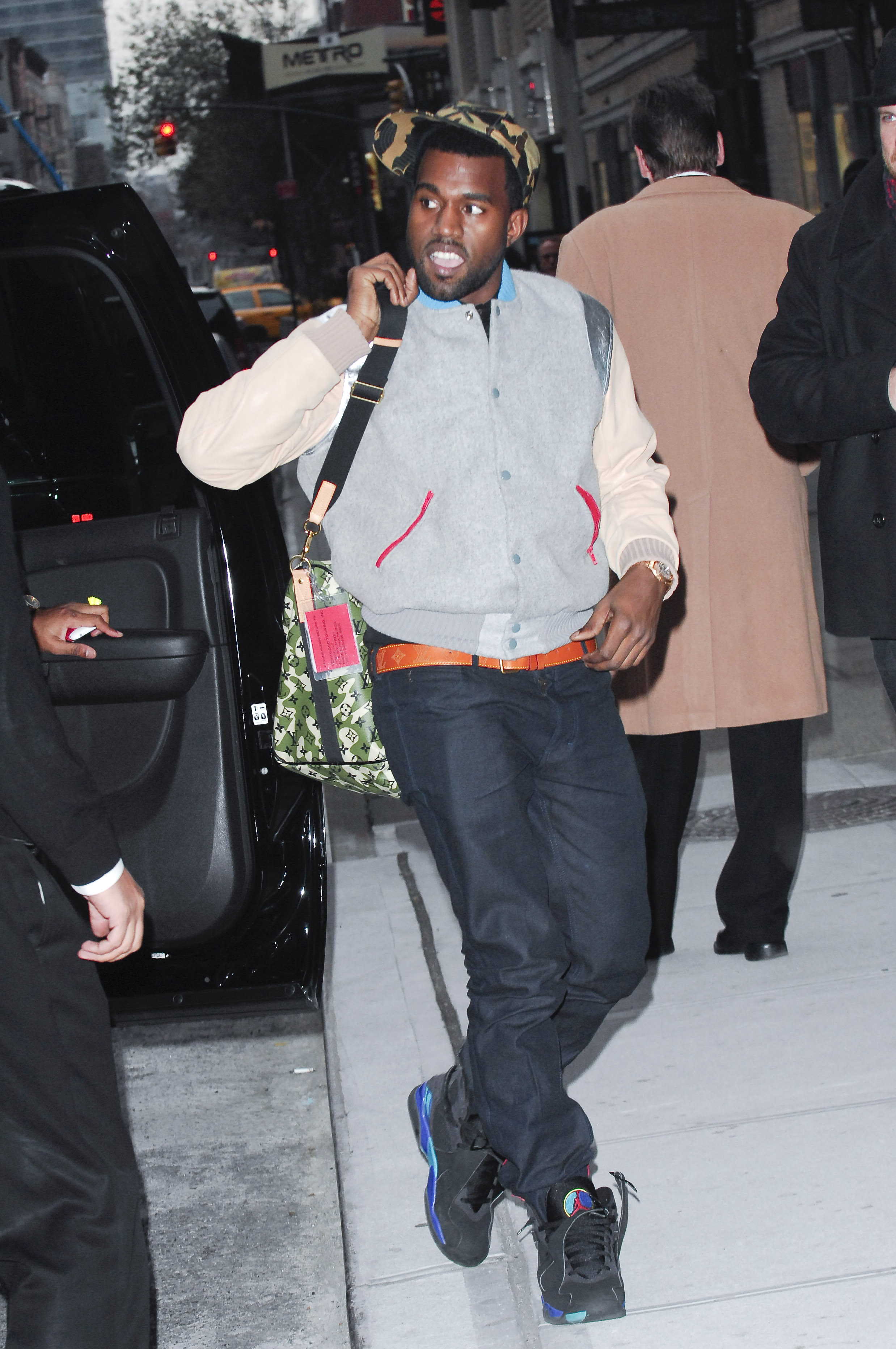
Under West’s lead, an overflow of samples were created, including: a pink neoprene jacket; a varsity jacket with ruching on the sleeves; denim; a hoodie with a cutaway waistband; women’s bags; a denim shirt (which, according to a designer, West hated at the time because he said he didn’t dress like a “work person”); footwear made in China, Italy, and Mexico; high-end sunglasses from Italy; fully beaded jackets; a dress made out of zippers; and items made from fur. Throughout the process, the design aesthetic would change to reflect West’s evolving taste. A designer recalls having a long conversation, over a few days, with West about Pastelle’s color palette, and using different shades of taupe with neon pops. “That’s what he was into around then,” says the designer, who asked to remain anonymous. “Even though the collection was very masculine, it was a feminine palette.”
According to the designers interviewed for this piece, West’s vision for Pastelle was innovative. He constantly tried to push the boundaries of what apparel, accessories, or footwear could be. “’Ye had some really super-dope ideas,” says Ben Baller. “He wanted to make a [Jesus piece] in porcelain and in jade. He wanted to make some really cool shit. If a jeweler now were to make Jesus pieces in jade it would change the game. And remember, this was almost 10 years ago. He also wanted to make some pieces for women’s purses. He wanted to make women’s handbags, and when he was doing those he wanted to make some hang tags in jade, marble, porcelain. He wanted some crazy materials. When I think about it now I’m like, ‘Damn. That’s crazy.’”
“I was pretty hyped for the Pastelle line,” he continues. “When I saw it, I was like, ‘Wow, this is fucking amazing.’ It was a cross between that real golden era of Polo, a simpler A Bathing Ape, and a little bit of A.P.C. If you put all three together, that was what it was like.”
“He was ahead of the time,” adds West’s former business associate, who asked to remain anonymous. “We still see stuff that he was working on that just came out. Prada had came out with these beautiful shearling jackets and he sent an image and said, ‘This was 2008. We did this already.’”
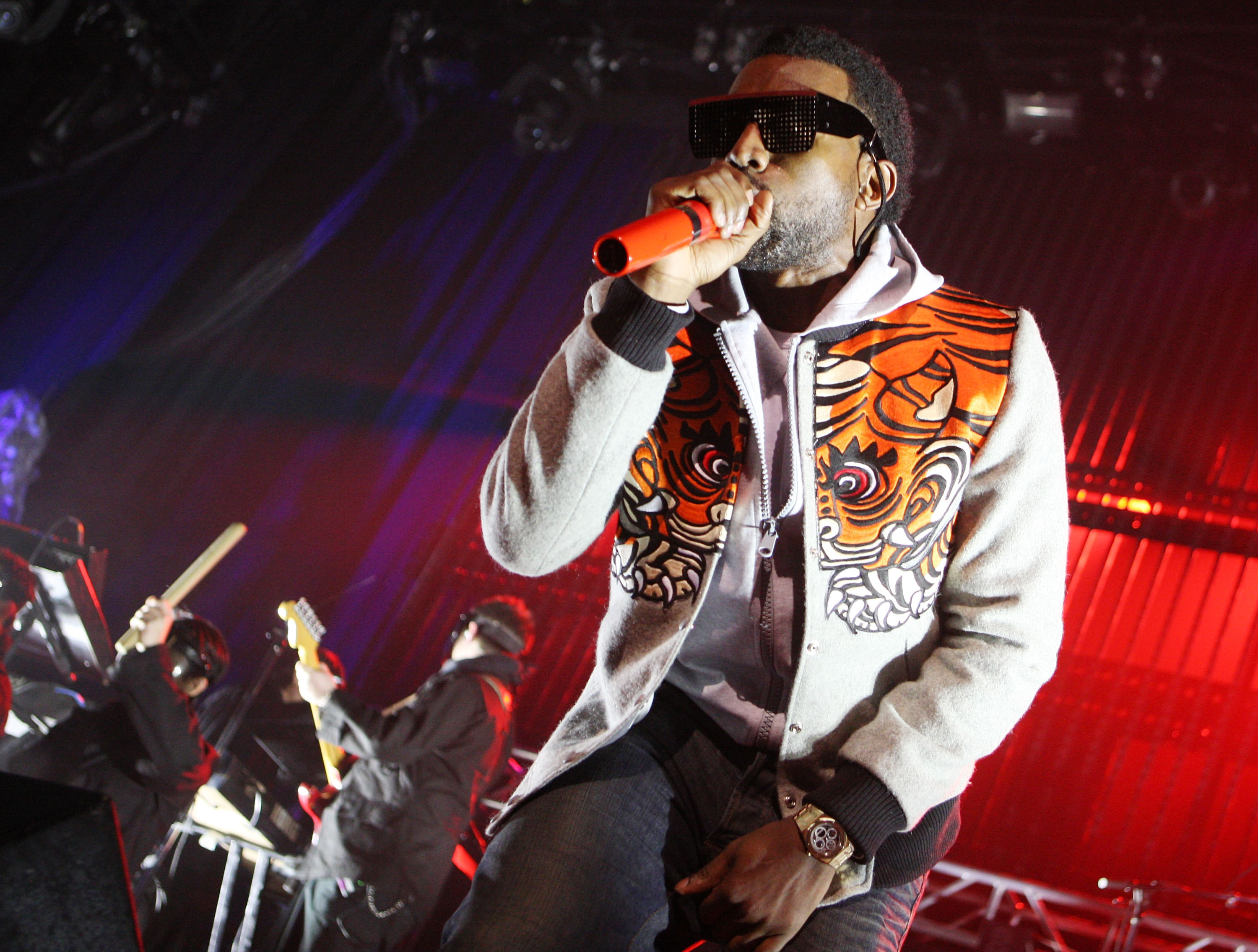
In the end, the amount of prototypes, most of which were made in Japan and L.A., would exceed anyone’s expectations. “I don’t know how many samples were made,” says Arnold. But, he says, the “intention and influence, the program we put together, it was a massive amount of information. It was a very large body of work.”
“We had a full collection done. We could’ve gone to market a couple of times, for sure,” West’s former business associate says, adding that while they never discussed exact pricing the line had a healthy range. There were $50 tees, but also ones for $150.
The bulk of the Pastelle samples were never revealed. But in 2008, VMAN ran an editorial styled by Kim Jones that showed some previously unseen pieces: West wore a navy suit over a denim shirt with a tan leather belt and a striped bow tie, while Lupe Fiasco modeled a black bomber jacket. The biggest teaser of all came the following year, when images leaked of a model resembling the rapper B.o.B. wearing the elusive blue Pastelle varsity jacket, along with other Pastelle items. The photos would be mistaken for the brand’s official lookbook. But, according to West’s former business associate, the images were more of an experimental test run. “It was an exercise for [Kanye] to shoot the clothes and see how it would style on people,” he says. In a similar way, Arnold says that West wore a lot of the samples out in public—especially during his trips to Paris Fashion Week in July 2008 and February 2009—“to see if he would like them or not.”
By this point, VMAN had also mentioned an October 2008 release date for Pastelle in its editorial. A few months later, West spoke of an online launch on his blog timed for the following year. “I’m gonna start releasing some of the pieces online starting in January,” he wrote in a November 2008 post, accompanied by a picture of himself wearing a gray wool varsity jacket with tan leather sleeves. “The jacket from the AMA’s, the Warrior hood that I wore at the Dior show and this one here.”
After three years of work, it was time for Pastelle’s debut.
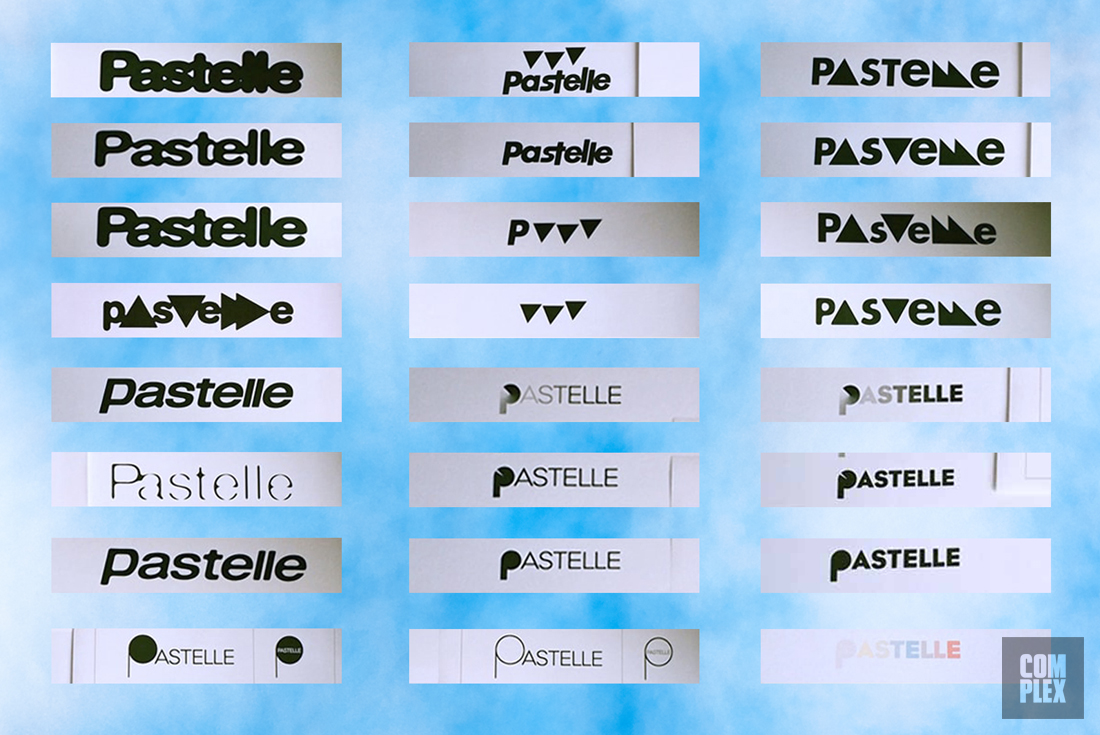
Ultimately, Pastelle's momentum quickly petered out. Highsnobiety reported the clothing line had been axed the same day the “lookbook” hit the web. “Pastelle by Kanye West | Never Coming Out,” read the headline. The next day, New York Magazine’s The Cut wrote: “Kanye West’s Pastelle Line Shall Never Grace the Bodies of the General Public.” By Fall 2009, post-Taylor Swift MTV VMAs fiasco, West took a hiatus from the media spotlight and even canceled his Fame Kills Tour with Lady Gaga. “I had to get up out of this motherfucker for a second,” West ranted to the crowd at a Kid Cudi concert in California. “I love the game so much and I’m so passionate about it, that I just can’t take this shit sometimes.” The dominos continued to fall: The L.A. office shuttered, plans of opening stores and hosting events at New York Fashion Week fizzled out, and the Pastelle website remained only a homepage with geometric shapes for a logo.
When it appeared that Pastelle was closing up shop, what was left behind were mountains of samples, but crevasses for explanations. West disappeared from the public eye for a few months, and some of his collaborators would never hear from him again. Those who didn’t formalize contracts—like Retrosuperfuture’s Daniel and VNGRD’s di Salvo and Budua—went unpaid. “That was not the moment to do it,” Daniel explains, adding that he prefers to set up arrangements in the distribution stage. The unsecure agreement was “another bad thing about all this stuff,” di Salvo says. “We worked on the project a lot, but no money and no glory.” Despite that, for he and Budua “the main thing was to do something with Kanye, more than take money from Kanye.”
“Kanye wanted Pastelle to be the sum of the best things he found, personalized by him. So, he chose the best people to collaborate with.” -simon beckerman
“We did the best we could at the time,” di Salvo says. “If you’re a 23-year-old… I think that if you want to work for some project, it can’t always be about contracts. You have to be smart, but you also have to take risks.”
With the exception of Ben Baller, who received an email from George—“Matt was like, ‘Yo, dude we gotta put everything on hold right now. We don’t know what’s going on’”—the contributors interviewed for this story say they learned of the brand’s demise online, and then lost contact with West and his team. Even now, it’s hard not to hear the disappointment felt by some of them. “When he disappeared, it was really sad, because for us, it was one of the biggest things that happened in our lives,” says di Salvo. (Di Salvo and his business partner Budua would later receive an email from West telling them he had moved on from Pastelle, and wanted to pursue something else.)
Another designer, who worked on apparel with West, says: “I was a little disappointed that this guy wasn’t going to be able to achieve his dream. But at the same time, I was also trying to get paid for my services. It was a little bit of nervousness and disappointment at how everything had gone.”
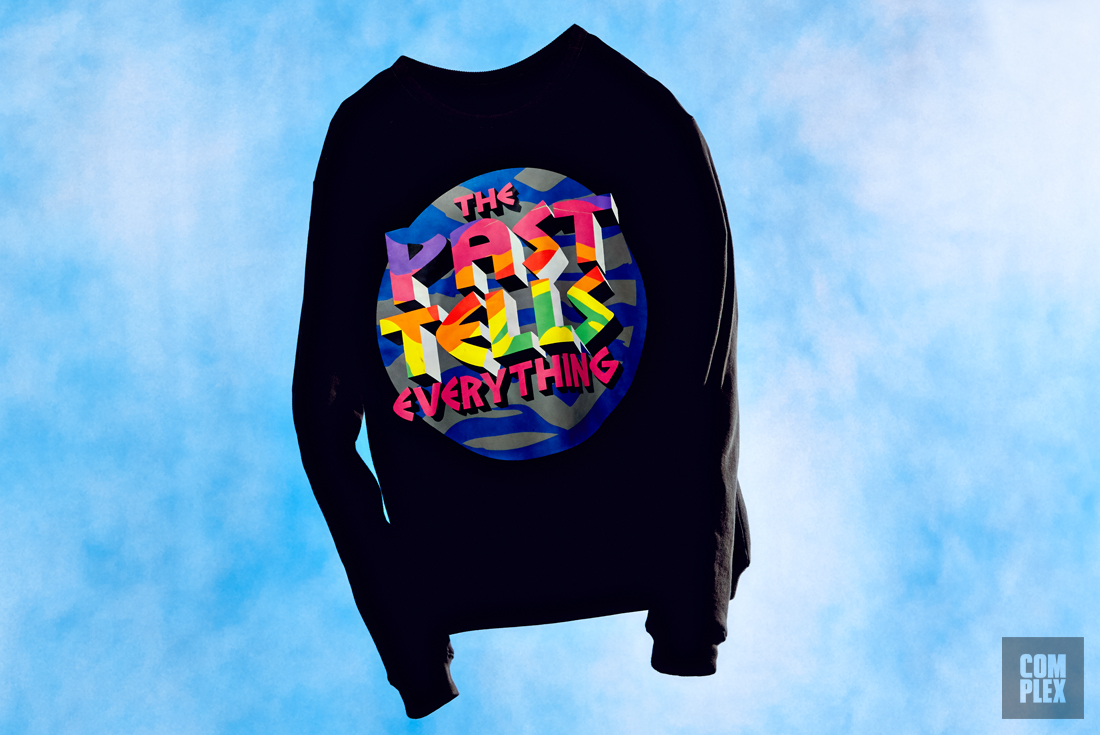
Fans were quick to speculate on why West pulled the plug on Pastelle. “I think he folded it 'cause when you doing collabos with High End designers and Nike and your stuff is flying out the doors and you're making a lot of money on it, why stress yourself to make your own brand,” one wrote on NikeTalk, an online sneaker forum. Another reasoned: “He was going to release it but his mother passed away right around the same time so he took his focus right off it…”
Those who were on the inside have their own theories on Pastelle’s demise. Retrosuperfuture’s Simon believes West realized that a fashion brand requires “a lot of effort,” something he thinks the rapper may not have had time for outside of music. “He was very enthusiastic,” he says. “He was very hands-on. He was very energetic about [Pastelle], and he loves working in fashion, but his main business is music. It’s a shame because I think he would’ve done something great.” Simon adds that he wasn’t disappointed when he learned Pastelle had shuttered. “My first reaction was, ‘Cool, we have some sunglasses that are so rare we can put them in a museum.’ Actually, it’s funny because the writing on the sunglasses actually says ‘Past. Tell. Museum.’”
Di Salvo says that “you can feel this kind of maniac approach” in everything West does, and while he respects that West’s a perfectionist, he may have been too much of an obsessive enthusiast in his vision for Pastelle.
Others say the Pastelle business was too disorganized. “At a certain stage, the situation got a little confusing,” Daniel says, thinking back to the number of people he communicated with. “I told [Kanye], ‘I’m not understanding who I have to speak to anymore. We need to change this or we won’t be able to do anything.’”
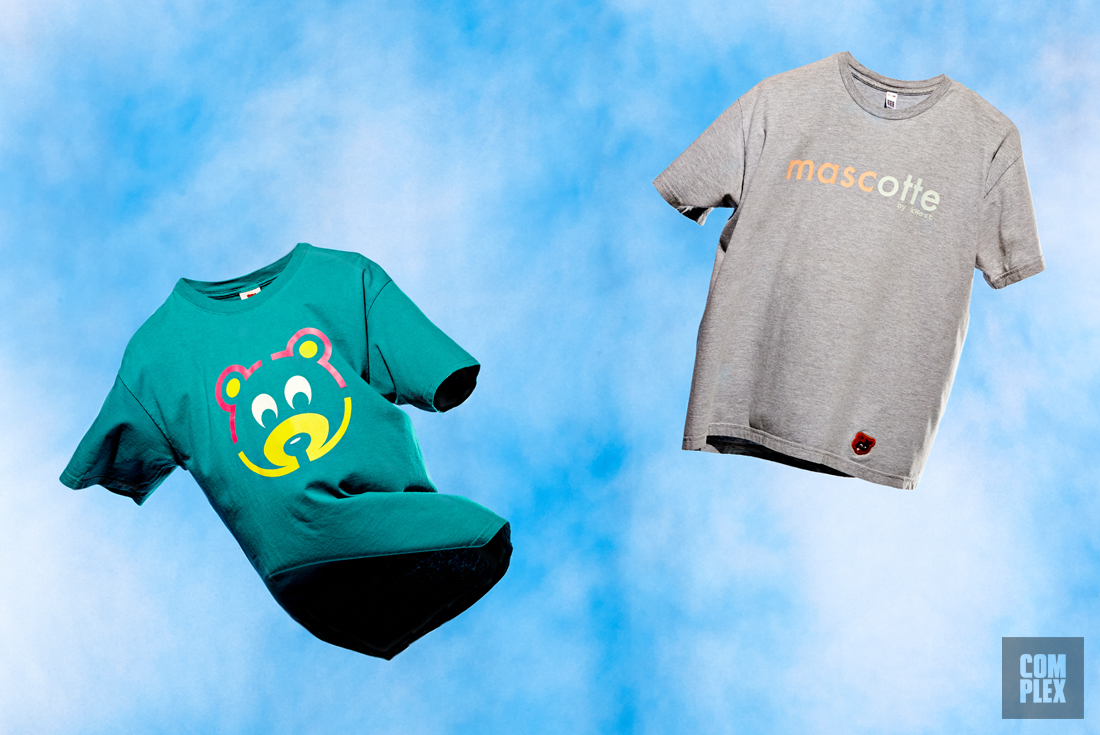
One Pastelle designer, who asked to remain anonymous, places the blame on the lack of a business plan. “His clothing was more about an outlet of expression and not necessarily a revenue stream,” he says. “It wasn’t structured like a business that practiced proficiency and scalability. It was a complete experiment from the beginning.” He adds that when he was brought on in 2009, West’s “main focus” had shifted to a Gap collaboration. “When I got there, he was on the heels of a Gap collaboration,” says the designer. “There were mood boards [at the Fairfax office] with Kanye’s inspirations and sketches of different sunglasses, pants, and tops. [He wanted to] do something radical that Gap wasn’t going to expect.” (West later confirmed, during an interview with 99.7 NOW!, that he was once in talks with Gap, but the partnership fell through because he “couldn’t get past the politics.” Gap declined to comment.)
“I think at that point, he still needed to define what his point of view was,” the designer continues. “I think he was looking at it project by project and I don’t think that, in design, he found his voice yet.”
West declined to be interviewed for this story, but a member of his inner circle says the rapper’s decision to end Pastelle was twofold: In the rapper’s mind, the collection wasn’t ready, and he wanted to turn his focus to a high-end women’s line, something his current team wasn’t set up to do. “We basically came to a position where Kanye and I had a conversation about whether or not we were actually going to put product out,” he says. “If not then, in my opinion, we should stop what we’re doing and come back to this when he was actually ready to pull the trigger. And if he wasn’t going to put product out, we could have three to five guys working with him full time and it would just be like a project he could continue. So, we kind of disbanded that and, you know, obviously two years later we had a small crew working on his [women’s] clothing line, which he put on the runway.”
“When [kanye] disappeared, it was really sad, because for us, it was one of the biggest things that happened in our lives." - giorgio di Salvo
“I think he wanted to do something that was a little more high end,” the member of West's inner circle continues. “He didn’t want to do a very commercial business, which [Pastelle] would’ve been. He wanted to have an elevated conversation in fashion. That’s why he wanted to do women’s, this price point. It was him growing into the designer that he is and being creative and all that. Pastelle was his university for fashion.”
West’s fashion dreams have now been actualized in myriad ways. In October 2011, he debuted his womenswear collection, KANYE WEST, during Paris Fashion Week. The collection—which included a leather skirt and jacket, silver python jeans, a black leather dress that unzipped at the waist, and an overdose of fur—received mixed reviews, and many of the pieces never made it past the runway, save for a pair of heels with white pearls and beads that were sold at the legendary, now defunct boutique Colette.
In March 2012, he presented his second women’s collection, this time to slightly better reviews. A few months later, he finally released the highly anticipated Nike Air Yeezy 2, the follow up to his initial Nike collaboration. Designed alongside Nike’s Nathan Van Hook, the shoe not only helped Nike continue to dominate the footwear industry but also set a new benchmark for what sneaker collaborations between musicians and sportswear brands could be.
From there, West’s success only continued. In the summer of 2013, his first A.P.C. collaboration hit stores. Fans immediately flocked to the French brand’s Soho boutique in Manhattan and A.P.C.’s website crashed due to high traffic. “I have to say that when he did the Kanye West x A.P.C. line, I was happy because he finally managed to do something in that sense,” says Daniel.

Things were going well for West. He had always wanted to design his own sneakers and clothing—and he had. But by November of that year, after a growing rift between West and Nike, the rapper confirmed he had cut ties with Nike and signed a deal with Adidas. “I took the Adidas deal because I have royalties and I have to provide for my family,” West said on Angie Martinez’s Hot 97 radio show.
West began working with Adidas immediately. But within that time, in 2014, he also reportedly traveled to Milan to work on another clothing line, though it’s unclear if it was his Adidas collection or an entirely new project. “[He was in Milan] for some months to work on the new collection, the Kanye collection,” says di Salvo. The collection was set to include footwear, some of which were designed by Marco Colombo, director of Sneakers magazine. But, like Pastelle, nothing came of it. “He worked with some of my friends who designed the shoes for him,” says di Salvo. “One day, randomly, he decided to stop everything.”
Then, in February 2015, West debuted his biggest fashion endeavour yet: the Adidas Yeezy Season 1 collection, which was designed by West and his team—Abloh, Jerry Lorenzo, Don C, and Vetements head designer/Balenciaga creative director Demna Gvasalia. According to retailers, the apparel—mostly elevated army surplus staples—sold relatively well, and the sneakers flew off the shelves. “I’m just happy that I was able to apply the mentality and passion that brought The College Dropout into existence,” West told Complex during an interview a few days after the Adidas Yeezy Season 1 show. “Now, I may finally have enough of a point of view and understanding to apply and create. Enough of a vision to make. There’s so many far more talented designers, but I just have a perspective and a heart. And I’m gonna give all the heart and perspective that I can.”

Following Yeezy Season 1, West caught the attention of the fashion world. That same month, he met with Bernard Arnault, chairman and CEO of French luxury goods conglomerate LVMH, which owns fashion houses such as Louis Vuitton, Givenchy, and Fendi, to negotiate a deal for his own label. “I had to go to Adidas and say, ‘I know we had the best fashion show and all this, but Louis Vuitton is gonna back Yeezy and the Kanye West company, and these guys are masters of clothes so I’m gonna need you to indemnify all the clothes,’” he said during a recent interview with Charlamagne Tha God. “And Adidas said, ‘Alright. Cool. We’ll just do the shoes.’” But ultimately, the deal, which West said he and Arnault “shook on,” fell through three months later. “[Bernard’s son Alexandre] called me and said, ‘It’s dropped at the board. We don’t think it’s gonna be profitable before we run out of money.’” West said. “They only wanted to invest $30 million into it. You need to invest at least $100 million when you’re making a new brand.”
Without LVMH’s backing, and after cutting ties with Adidas for the apparel, West was left without a production partner for Yeezy Season 2 and the collection, he noted, “never went to market.” (West and Adidas continued the footwear collaboration.) “The first collection with Adidas had lineups and there was nothing to fall back on on the second collection due to that negotiation,” he told Charlamagne.
But West would have more luck and success with Season 3. In February 2016, he presented his third collection at a fashion show at Madison Square Garden that doubled as a listening party for his latest album, The Life of Pablo. In addition to fans who purchased tickets to the event, the invited crowd included his wife Kim and daughter North, the rest of the Kardashians, Balmain’s Olivier Rousteing, Vogue editor Anna Wintour, models Gigi Hadid and Karlie Kloss, Pusha-T, Kid Cudi, Travis Scott, JAY-Z, as well as Lil Yachty and Naomi Campbell, both of whom appeared in the show.
After years of rants/streams of consciousness about not being accepted by the fashion industry, the MSG show was West’s official arrival as a fashion creative who could not be ignored. An ever-expanding range of TLOP merch—T-shirts and sweatshirts featuring lyrics and song titles from the album, first sold at MSG and later at pop-up shops and concert venues—also struck a chord with consumers. At the NYC pop-up alone, West reportedly sold $1 million worth of merch in two days.
“It’s been a hard struggle… and I feel so happy,” West, dressed in a black “YEEZUS” hat and a red long-sleeve The Life of Pablo shirt, told the crowd at MSG. “I feel so much joy to be able to actually follow my dreams without people shitting on me and being given an opportunity to create as an artist.”
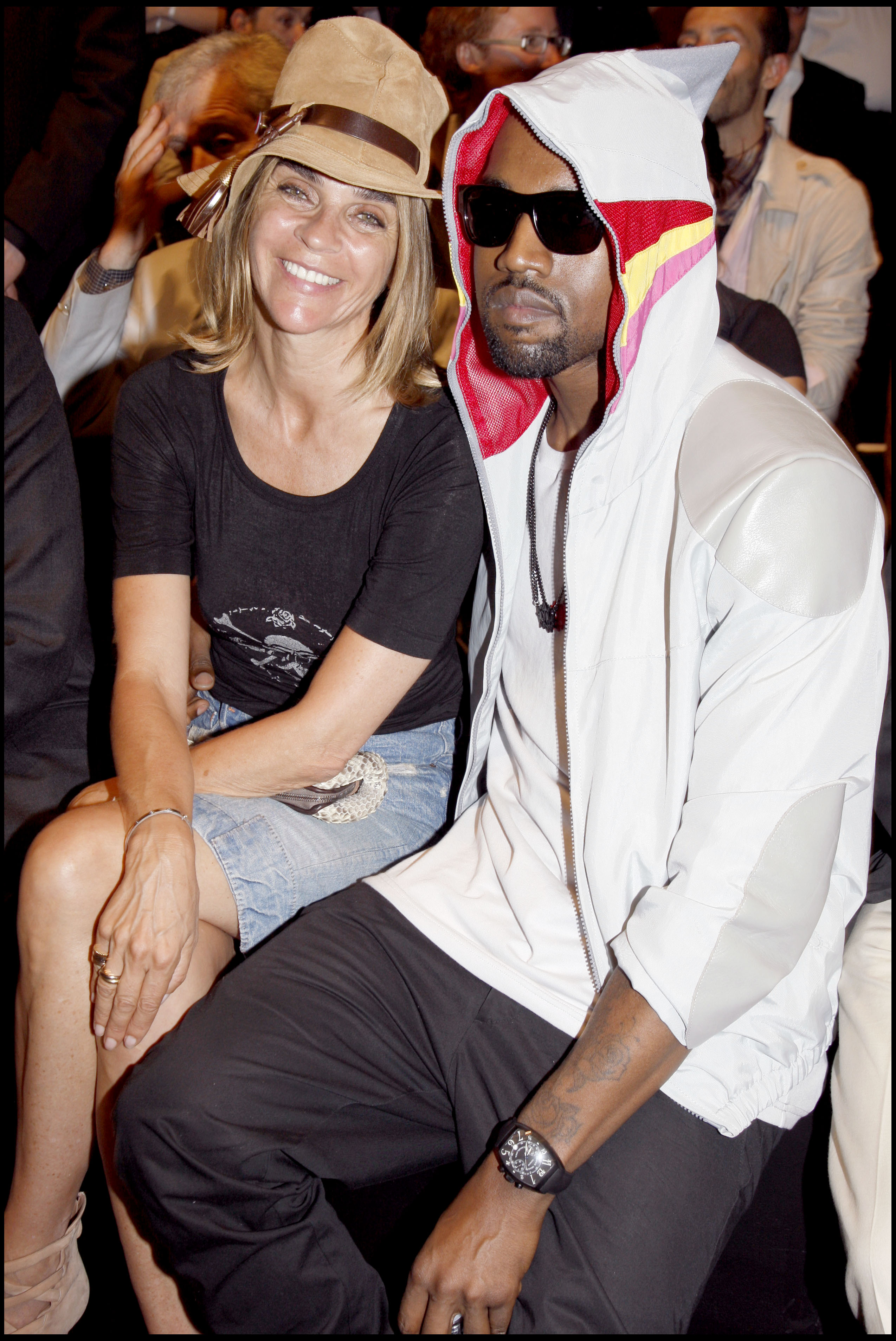
West has since continued to work on his clothing line. In 2016, he presented Season 4 at the Franklin D. Roosevelt Four Freedoms Park in New York—though the show was critically panned, mostly due to the delay and heat, which caused a model to pass out. Season 5 was deemed an improvement and praised by critics. Late last year, he released Season 6 using a genius, perhaps more effective marketing strategy: paparazzi pictures of Kim Kardashian wearing various pieces from the line. (In late January, he took that promotion further and dressed celebrities and influencers, like Paris Hilton, Amina Blue, and Kristen Noel Crawley, in the same Yeezy Season 6 pieces Kardashian had worn in the paparazzi photos.) He has also launched a kids’ line with Kardashian, aptly called Kids Supply, and is reportedly opening Yeezy stores with Adidas.
But in that time—nearly a decade in total—Pastelle has remained a mystery, an idea that never came to fruition. The first time we heard of Pastelle again was in March 2016, when the controversial Ian Connor teased on his social media accounts that he would be reviving the brand. “[Ian and I] talked about it—and you know, he’s Kanye’s muse right now, he’s one of the creative directors of Yeezy—and he was like, ‘Fuck this. I’m gonna talk to Ye about this,’” Ben Baller remembers. “Next thing you know, he went to New Orleans and talked to Ye and was like, ‘I’m about to bring Pastelle back.’ Then one day they got a hold of the archives, and when Ian and I linked up again in L.A. he was wearing the [blue] letterman jacket.”
Asked about Connor’s involvement, a source directly inside West’s camp said: “We have no plans for Pastelle to announce at this time.”

In 2009, after rumors surfaced of a collaborative set of sunglasses between West’s Pastelle and Australian label Ksubi, Daniel received a phone call from West, proposing they work together again. It had been a year since the two had spoken. They exchanged ideas over the phone and eventually met over dinner in Paris, where West was working on what would become his women’s collection. On the way to the restaurant, Daniel, West, Don C, and Abloh rode in a black van, much like the one in 2010 action comedy film The A-Team, and started brainstorming. Daniel brought a cuvette of sunglasses that held frames from Retrosuperfuture and vintage pairs form Persol, Gucci, and Cartier. “It was so amazing,” Daniel recalls, “because I showed him all the vintage sunglasses, and he wasn’t so interested.” Instead, West went nuts when he saw the Retrosuperfuture frames, including the Flat Top, which the rapper collaborated with Daniel on during their first partnership. “[Kanye] got so excited and said things like, ‘See, this is what I’m looking for.’ He had the Flat Top in his hands and said, ‘Look at the lines. It’s so simple, elegant, perfect.’”
But, like the first time, nothing ultimately came from the reunion. Nevertheless, Daniel says that working with West was a remarkable experience. “It was amazing. I started a brand from nothing, and a year later I had Kanye West calling me.”
No matter the outcome, the collaborators interviewed for this story agree with Matt George’s assessment: “Kanye is the hardest-working person I’ve ever been around.” Says Arnold, “It was incredible what he was up to.”
Had Pastelle actually seen the light of day, nearly a decade ago, who knows what it would’ve meant for West’s fashion career today—or those of his collaborators. Daniel says, “If it was meant to be, it’d be.”
“But,” he adds, “if [Kanye] wants to do a sunglass line again, he knows my number.”
